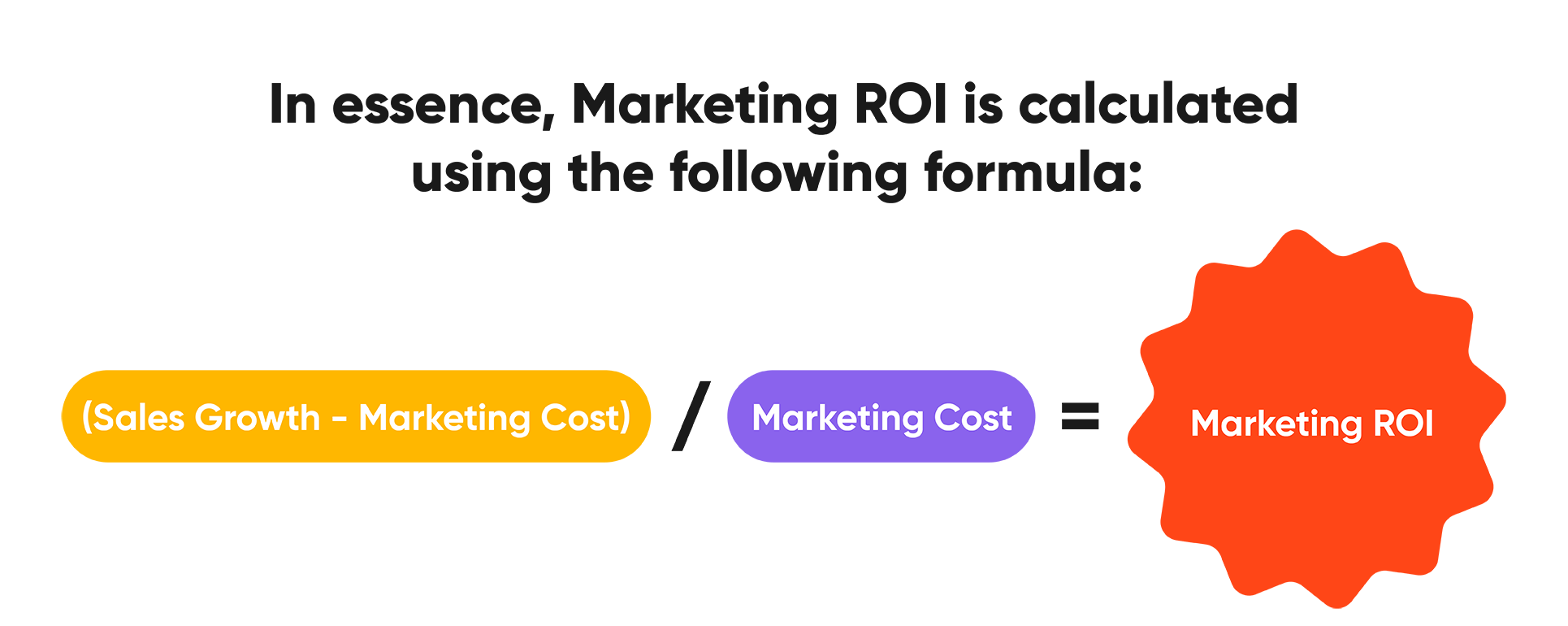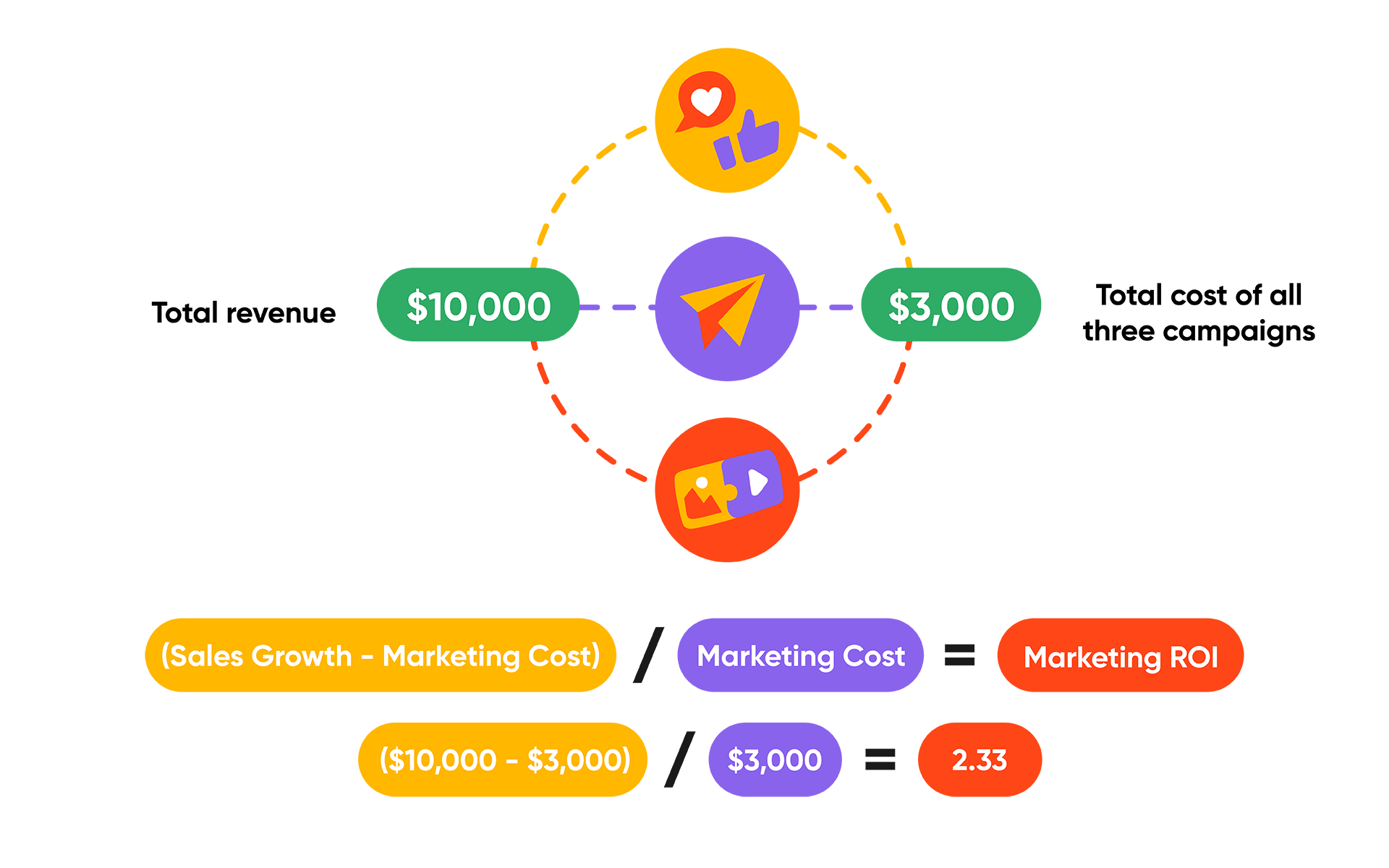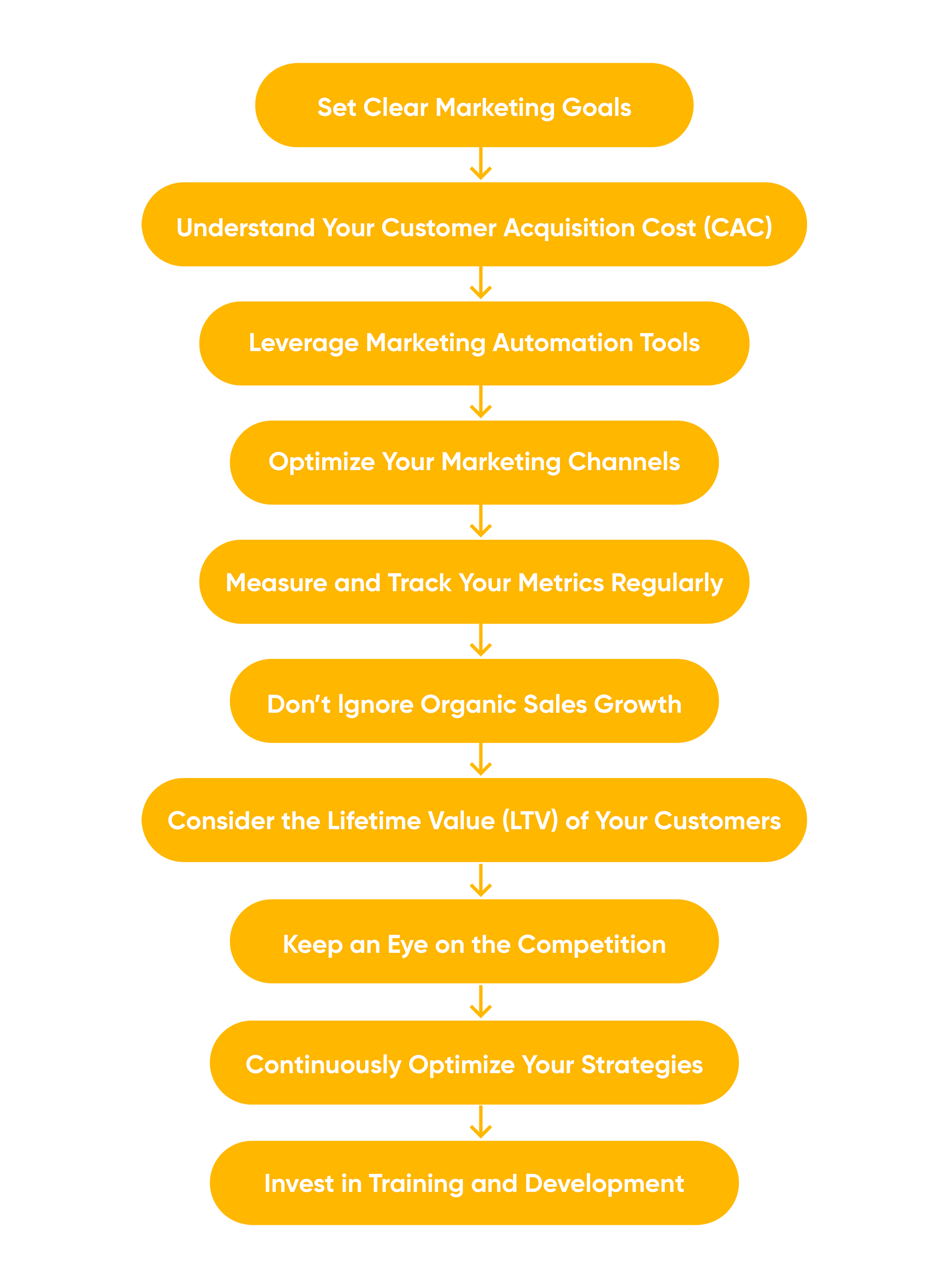Understanding the return on investment (ROI) in marketing is crucial for any organization. It's not just about how much money you're using for your marketing activities. What's really important is figuring out how much good those activities are doing for your business.

Whether you're a business professional looking to measure the efficiency of your marketing efforts or a marketer aiming to justify your marketing spend, this guide on Marketing ROI metrics is for you. Don't miss out on the opportunity to maximize your marketing efforts and get the most out of every dollar spent.
Table of Contents:
- What is Marketing ROI
- Calculating Marketing ROI: Example
- Why is Marketing ROI important
- How to optimize Marketing ROI
- Conclusion
What is Marketing ROI?
Marketing ROI (Return on Investment) is a critical metric that businesses use to measure the effectiveness of their marketing campaigns. It quantifies the return received from each dollar spent on marketing, providing a clear picture of the profitability of your marketing efforts.

Calculating Marketing ROI: Example
Let's say you run a small online clothing store and you decide to spend $5,000 on a social media advertising campaign. The goal of this campaign is to drive more sales to your website.
After running the campaign for a month, you find that it has resulted in an additional $20,000 in sales.
To calculate the ROI of this marketing campaign, we will use the following formula:
(Sales Growth - Marketing Cost) / Marketing Cost = Marketing ROI
($20,000 - $5,000) / $5,000 = 3.0
So, your Marketing ROI for this campaign would be 3.0, or 300% when expressed as a percentage. This means that for every dollar you spent on the campaign, you generated 3 dollars in sales.
Remember, this is a simplified example.
Sometimes you would need to consider other factors such as organic sales growth and the cost of goods sold. But this example should give you a basic understanding of how the Marketing ROI formula works.
Running multiple campaigns simultaneously:
Suppose you ran 3 different marketing campaigns in the same period. The total revenue generated from all three campaigns was $10,000 and the total cost of all three campaigns was $3,000.

This means that for every dollar you spent on marketing during this period, you earned $2.33 in revenue.
Why is Marketing ROI Important?
Understanding your Marketing ROI is crucial for several reasons:
- Justify Marketing Spend: By accurately calculating the ROI, you can justify your current marketing spend and secure budget for future campaigns.
- Allocate Marketing Budgets: Knowing which marketing efforts drive the most revenue helps in distributing the marketing budget effectively.
- Measure Campaign Success: Accurate ROI measurement helps in establishing baselines for future campaigns and quickly adjusting efforts to maximize impact.
- Competitive Analysis: Tracking the marketing ROI of competitors can help keep your efforts consistently competitive.
How to Optimize Marketing ROI
Now that we've covered the basics, let's investigate some actionable tips that can help you optimize your Marketing ROI metrics.

Set Clear Marketing Goals
Before you can measure your ROI, you need to have clear marketing goals in place. These goals should be specific, measurable, achievable, relevant, and time-bound (SMART).
Understand Your Customer Acquisition Cost (CAC)
CAC involves all the costs you need to acquire a new customer, including marketing and sales expenses. By understanding your CAC, you can identify ways to reduce it, meaning improving your ROI.
Leverage Marketing Automation Tools
Marketing automation tools can help you streamline your marketing processes, reduce manual tasks, and improve efficiency. This can lead to cost savings and improved ROI.
Optimize Your Marketing Channels
Identify which channels are most effective for your business and focus your efforts there. This might involve A/B testing different channels to see which ones yield the best results.
Measure and Track Your Metrics Regularly
Regular measurement and tracking of your Marketing ROI metrics are crucial for identifying trends, spotting issues early, and making informed decisions.
Don't Ignore Organic Sales Growth
While it's important to focus on the sales growth resulting from your marketing efforts, don't ignore your organic sales growth.
Consider the Lifetime Value (LTV) of Your Customers
When calculating your Marketing ROI, consider the lifetime value of your customers. This is the total revenue you can expect from a customer over the lifetime of their relationship with your business.
Keep an Eye on the Competition
Understanding your competitors' marketing strategies and their outcomes can provide valuable insights that can help you optimize your own strategies.
Continuously Optimize Your Strategies
Marketing is a dynamic field, and what works today may not work tomorrow. Therefore, it's important to continuously optimize your marketing strategies based on your Marketing ROI metrics.
Invest in Training and Development
Your marketing team is crucial to your marketing success and ROI. Therefore, investing in their training and development can lead to improved marketing strategies and outcomes.
Conclusion
In conclusion, understanding and optimizing your Marketing ROI is not a one-time task but a continuous process. It requires regular tracking, analysis, and optimization. By following the steps and strategies outlined in this guide, you can ensure that your marketing efforts are driving value for your business.
Remember, the key to improving your Marketing ROI lies in continuous learning, tracking, and optimization.
Also, it’s worth noting that there are many ways to measure the success of a marketing campaign like Click-through-Rate (CTR), conversion rate, engagement rate, customer lifetime value (CLV), and many more.
Happy marketing!











